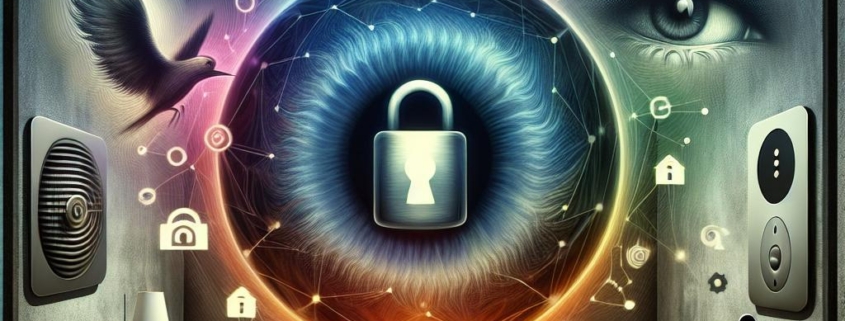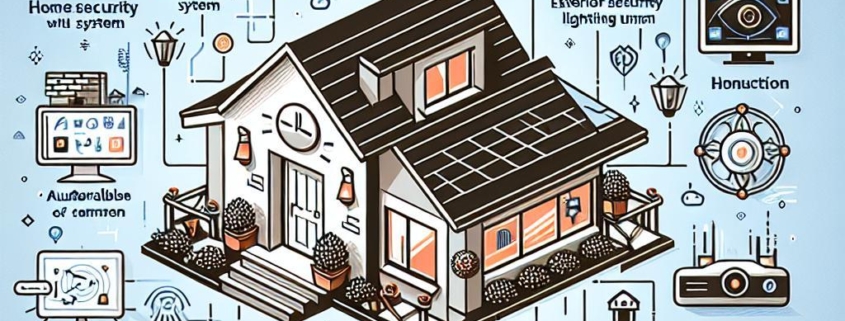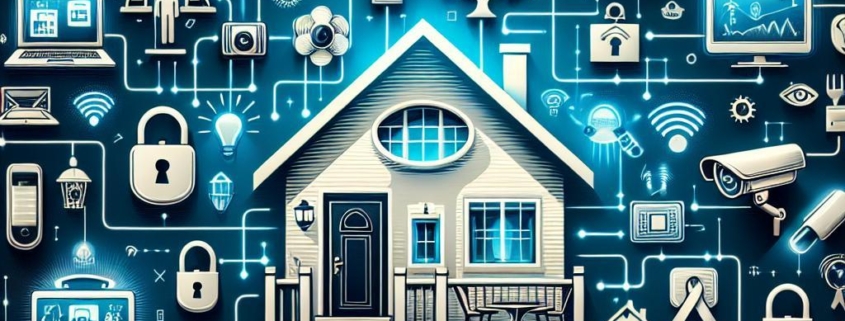In today’s world, the protection and security of buildings, whether residential, commercial, or industrial, are of utmost importance. Fire and security systems play a vital role in ensuring the safety of individuals, safeguarding property, and maintaining business operations. This article will delve into the complexities of fire and security systems, examining their components, functions, advantages, and the latest technological innovations.
Understanding Fire Systems
Components of Fire Systems
Fire systems are specifically designed to detect, alert, and suppress fires, thereby reducing damage and saving lives. The key components of a fire system include:
- Fire Detection Systems:
- Smoke Detectors: These devices identify smoke particles in the air, indicating the presence of a fire.
- Heat Detectors: These sensors detect changes in temperature, especially rapid increases, which are indicative of a fire.
- Flame Detectors: These sensors use infrared or ultraviolet technology to detect flames.
- Fire Alarm Systems:
- Manual Call Points (MCPs): Also known as pull stations, these devices allow individuals to manually trigger the fire alarm.
- Alarm Sounders and Strobes: These devices emit loud sounds and flashing lights to alert occupants during a fire emergency.
- Fire Suppression Systems:
- Sprinkler Systems: These systems automatically release water when a fire is detected.
- Gas Suppression Systems: These systems utilize inert or chemical gases to extinguish fires, commonly used in areas where water damage needs to be minimized.
- Foam Systems: Typically used in environments with flammable liquids.
- Control Panels:
- Fire Alarm Control Panel (FACP): The central component of the fire detection and alarm system, processing signals from detectors and triggering alarms.
- Suppression Control Panels: These panels manage the activation of fire suppression systems.
Importance of Fire Systems
Fire systems are essential for various reasons:
- Life Safety: Early detection and warning systems allow occupants to evacuate safely.
- Property Protection: Rapid detection and suppression help minimize property damage.
- Regulatory Compliance: Adhering to fire safety regulations is mandatory in most jurisdictions, and fire systems ensure compliance.
- Business Continuity: Effective fire systems prevent extensive damage, enabling businesses to resume operations promptly.
Exploring Security Systems
Components of Security Systems
Security systems are designed to prevent unauthorized access, detect intrusions, and monitor activities within and around a building. Key components include:
- Access Control Systems:
- Keycard and Keypad Systems: These systems restrict access to authorized individuals through keycards or PIN codes.
- Biometric Systems: These systems use fingerprint, facial recognition, or iris scanning for access control.
- Intercom Systems: These systems facilitate communication between different parts of a building, often integrated with access control.
- Surveillance Systems:
- Closed-Circuit Television (CCTV): Cameras monitor and record activities within and around a building.
By understanding the intricacies of fire and security systems, individuals and businesses can better protect themselves, their assets, and their operations. Embracing the latest technological advancements in these systems can enhance overall safety and security measures.
Enhancing Security Systems for Modern Buildings
- Network Video Recorders (NVRs): These devices are essential for storing video footage captured by IP cameras, ensuring that all recorded data is securely stored and easily accessible for review.
- Video Analytics: Utilizing advanced software for analyzing video footage is crucial in identifying any unusual activities or behaviors, providing an extra layer of security and surveillance.
Components of Intrusion Detection Systems
- Motion Sensors: These sensors play a vital role in detecting any movement within a protected area, immediately alerting security personnel of potential intrusions.
- Glass Break Detectors: By identifying the sound of breaking glass, these sensors are instrumental in detecting unauthorized entry attempts, enhancing the overall security of the premises.
- Door and Window Contacts: Triggering alarms when doors or windows are opened unexpectedly, these devices are essential for preventing unauthorized access and ensuring the safety of the building.
Understanding Alarm Systems and Their Functions
- Burglar Alarms: These alarms are designed to be triggered by any unauthorized access or movement, serving as a deterrent to potential intruders and alerting occupants of security breaches.
- Panic Buttons: Providing a quick and direct way to signal emergencies, panic buttons are crucial for ensuring immediate response and assistance during critical situations.
- Alarm Monitoring Services: Offering round-the-clock monitoring of alarm systems, these services play a vital role in promptly notifying authorities in case of any security breaches or emergencies.
The Significance of Security Systems in Buildings
- Crime Prevention: Visible security systems act as a deterrent to potential criminals, reducing the likelihood of security incidents and unauthorized access.
- Incident Detection: Providing real-time detection and alerts, security systems help in identifying and responding to any suspicious activities or security breaches promptly.
- Evidence Collection: Surveillance footage captured by security systems serves as crucial evidence for investigations and legal proceedings, aiding in resolving security-related issues effectively.
- Peace of Mind: Robust security measures in place offer occupants a sense of safety and security, ensuring a comfortable and secure environment within the building.
Benefits of Integrating Fire and Security Systems
- Centralized Monitoring: Integrating fire and security systems into a unified platform allows for centralized monitoring, enhancing response times and coordination during emergencies.
- Cost Efficiency: Integrated systems offer cost-effective solutions by reducing installation and maintenance expenses compared to separate systems, ensuring optimal security within budget constraints.
- Enhanced Safety: Coordinated responses to emergencies ensure comprehensive protection, minimizing risks and enhancing overall safety measures within the building.
Advancements in Fire and Security Systems Technology
Smart Systems and IoT Integration
- Remote Monitoring and Control: IoT-enabled systems enable users to monitor and control fire and security systems remotely, providing convenience and accessibility for managing security measures.
- Automated Responses: Smart systems can automatically adjust settings based on real-time data, enhancing efficiency and responsiveness in managing security and fire safety measures.
- Predictive Maintenance: IoT sensors monitor system health, predicting maintenance needs and ensuring optimal performance, reducing the risk of system failures and downtime.
Artificial Intelligence and Machine Learning
- Advanced Video Analytics: AI-powered analytics enhance security systems by accurately detecting threats and unusual behaviors, improving overall surveillance and threat detection capabilities.
- Predictive Fire Detection: ML algorithms analyze sensor data to predict fire risks and provide early warnings, enhancing fire safety measures and reducing the risk of fire incidents.
- Adaptive Systems: AI enables systems to adapt to changing conditions, optimizing performance and reducing false alarms, ensuring efficient and reliable security measures.
Wireless and Cloud-Based Solutions
- Flexible Installation: Wireless systems offer easy and cost-effective installation, particularly beneficial for retrofitting older buildings with modern security and fire safety measures.
- Scalability: Cloud-based solutions allow for easy scaling of systems as per changing needs, providing flexibility and adaptability in managing security measures effectively.
- Real-Time Updates: Cloud platforms offer real-time updates and data access, improving situational awareness and response times during security incidents or emergencies.
Enhancing Building Efficiency and Safety through BMS Integration
Integrating fire and security systems with Building Management Systems (BMS) is crucial for improving overall building efficiency and safety measures. This integration allows for coordinated control of various building systems, leading to enhanced performance and occupant protection.
Benefits of Integration
- Energy Management: By synchronizing lighting, HVAC, and security systems, buildings can achieve higher energy efficiency levels.
- Emergency Coordination: BMS integration ensures seamless collaboration between different systems during emergencies, ultimately enhancing occupant safety.
Key Challenges in Implementing Fire and Security Systems
While the advantages of fire and security system integration are evident, there are several challenges and considerations that need to be addressed:
Regulatory Compliance
Adhering to local, national, and international fire and security regulations is essential to avoid legal consequences, increased insurance costs, and compromised safety standards.
System Integration
Integrating diverse fire and security components, especially in large or complex buildings, can be complex due to compatibility issues and the necessity for seamless communication between systems.
Cost Considerations
The initial investment and maintenance costs of fire and security systems can be substantial. It is crucial to balance these costs with long-term benefits, considering factors like system reliability, scalability, and maintenance needs.
User Training and Awareness
Properly operating and maintaining fire and security systems require trained personnel. Regular training programs ensure that occupants understand how to respond to emergencies and utilize the systems effectively.
Technological Adaptation
Keeping pace with rapid technological advancements is a challenge. Regular updates and upgrades are necessary to ensure that systems remain effective and take advantage of the latest innovations.
Emerging Trends in Fire and Security Systems
The future of fire and security systems will be influenced by several emerging trends that are set to transform the industry:
Enhanced AI and Machine Learning Capabilities
Advancements in AI and ML will lead to more intelligent and autonomous systems capable of making real-time decisions with greater accuracy.
Increased IoT Connectivity
The rise of IoT devices will enable more comprehensive and interconnected fire and security systems, offering seamless integration and enhanced functionality.
Cybersecurity Integration
As systems become more interconnected, robust cybersecurity measures will be essential to protect against digital threats.
Sustainability and Green Technologies
Environmental concerns will drive the development of sustainable fire and security systems incorporating energy-efficient technologies and eco-friendly materials.
Personalized Security Solutions
Future security systems will provide personalized solutions tailored to the specific needs of individuals and organizations, enhancing overall protection and user experience.
Conclusion
Fire and security systems play a vital role in ensuring the safety and protection of modern buildings. By understanding their components, functionalities, and benefits, stakeholders can make informed decisions to implement effective systems. The integration of advanced technologies such as IoT, AI, and cloud-based solutions continues to enhance the capabilities of fire and security systems, ensuring they remain robust and adaptable to evolving challenges. Staying informed about technological advancements and emerging trends will be crucial for maintaining optimal safety and protection in the built environment.




